Western Armenian haikus... wait, what?
Garin Bedian
February 21, 2021
Born and bred in the American Midwest, inspired by Zahrad and pushed by Twitter, Garin Bedian (aka Angoghinian, get it?) published his first book of Western Armenian haikus titled "Հայերէն հայքու" ("Hayeren haiku" | "Armenian Haiku").
| Genre | Haiku |
| Published | 2020 |
| Location | Yerevan, Armenia |
| Language | Western Armenian |
| Link | Abril Books (LA), Hamazkayin Bookstore (Lebanon), and Bookinist (Yerevan) |
I found myself having coffee with Garin Bedian in post-blast Beirut. He had asked for a quick Zoom session a week beforehand to tell me that he would be traveling to Lebanon soon. He wanted to experience the country and engage with the Lebanese Armenian community “before it becomes another Syria,” as he reflected. He was h-pem’s ambassador and I barely knew him. But his humor struck me, as grim as it was.
Garin gifted me a pre-sale version of his book. We read it together. “It would have been easy for me to publish it on Amazon, but I want the ISBN to be in Armenian,” he said. I told him that the ISBN is an international identifier and wouldn’t matter much. Fast forward a few months, and the book, edited by Rupen Khajag (former editor of h-pem), was printed and published in Yerevan, Armenia.
The ISBN? In Armenian.
“As a child I grew up speaking Western Armenian at home. But as I grew older, my grasp of the language was still quite basic and didn’t match my interests. I found myself very limited to what I could read. Worried about Western Armenian becoming an endangered language, I decided to become a contributor, and not a mere spectator,” the author had revealed.
The cover of the book, designed by the editor, depicts Ararat with the backdrop of the Japanese flag. A note (in Western Armenian) on the copyright page reads:
“By the way, you’ve bought this book? Are you nuts? Who would pay money for this? Garin’s haikus are available online for free at կարին.հայ.”
This is a clue as to what awaits you in the pages within—the book that tried to make fun of you.
Garin has dedicated the book to all those who have difficulty reading Armenian and need a simple book to start with:
I have a friend
Who didn't want to try reading a book
Said it's long
(translated)
[Ընկեր մը ունիմ
Չուզեց փորձել գիրք կարդալ
Ըսաւ երկար է]
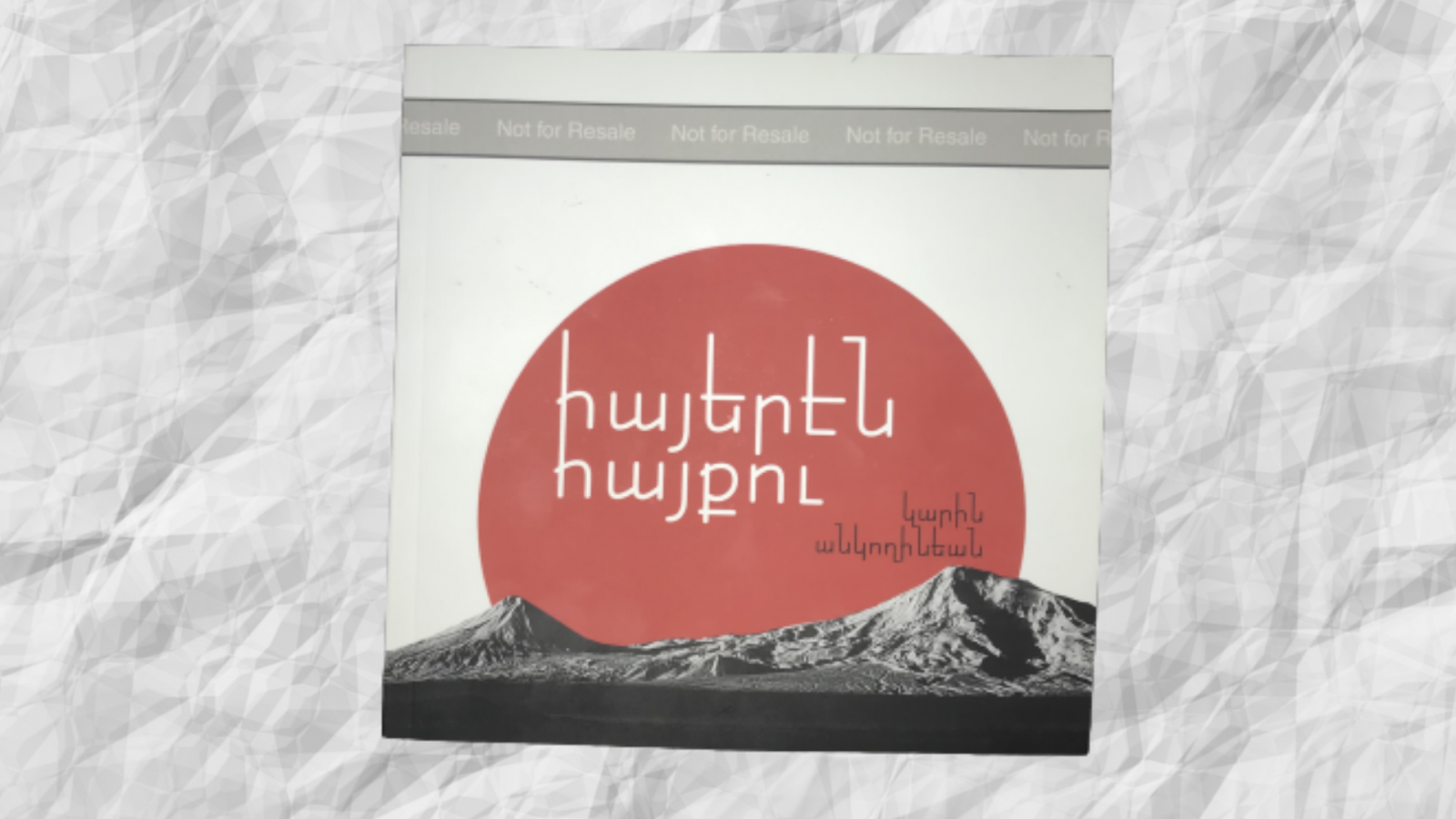 Shahen's pre-sale version of "Armenian Haiku."
Shahen's pre-sale version of "Armenian Haiku."What are haikus? Why haikus?
The haiku is a short Japanese poetic form. The entire poem consists of a single stanza adhering to 17 syllables, spread over 3 lines that follow a syllable pattern of 5-7-5. The first English haikus appeared in the 19th century. They were translations of Japanese poems. But the genre grew to include such famous authors as Jack Kerouac and Richard Wright, who wrote and published English haikus in the first half of the 20th century. The first haiku conference in North America was held in 1991, and has become a tradition ever since.
“My first experience with haikus was in an English class at an American public elementary school,” said Garin. “I never did anything with it until 2019, when I wrote one as a joke. It was a self-conscious haiku titled “Hayeren Haiku”:
Armenian Haiku
Japanese Culture
Poetry
[Հայերէն հայքու
Ճափոնական մշակոյթ
Բանաստեղծութիւն]
“I continue to write haikus and receive feedback from friends who admire the poems for being simple, concise, and refreshing to read. They find the topics appealing and relatable. Reading an entire poem consisting of just 17 syllables helps them get past the language hurdle,” he tweeted soon after the book came out.
It was a revelation to me! The Armenian haiku was becoming a trend with mainstream potential. The only time I had seen folks writing Western Armenian haikus was at the 2018 Zarmanazan, but they were just kids.
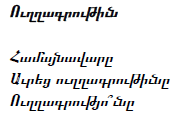
Garin struggled with the language
“We always spoke Armenian at home, but I had never been in an environment where I was exclusively surrounded by Armenians, nor did I know anyone who spoke only Armenian. I was under no obligation to use the language,” he said. “My relationship with Armenian was always somewhere between being pushed by my parents to speak Armenian and սրտանց | srdants—the passion for speaking the language.”
The odds were against Garin in America. “My family has been in the American Midwest for over 100 years, and it has been really hard to keep the language going. But that won't stop me,” he said. “Over the last decade, I have been pushing myself more and more to master the language. I try to totally surround myself with the Armenian language, so that I can improve my fluency.”
Garin’s phone contacts, text messages, tweets, notes, and overall writing are now entirely in Armenian. “I have always had an interest in writing, but lacked the confidence and skills. I started journaling as an adequate opportunity to practice oral Armenian. I love the fact that I can express myself in Armenian now, even more so, that I can publish my own work and reach a wider audience,” he stated, when asked about how he started experimenting with the language.
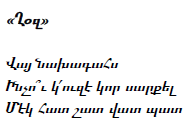
Twitter: where Garin and Zahrad meet
Garin also enjoys tweeting!
“One day I decided to tweet only in Armenian, and I have kept at it ever since. It proved to be an excellent way to practice the language,” he said. “It is quite interesting because you can search for Armenian words and see who shares them, or read an entire Twitter history in Armenian. Combine Western Armenian with classical Armenian orthography and you will find very interesting ideas tweeted by Armenians over the last ten years.”
Twitter did help jump-start Garin’s haiku dream, but “two Armenian poets that have influenced me are Kamar Katiba and Zahrad,” he says. “I never get tired of reading Katiba’s works written more than 140 years ago, which have not lost their relevance today. I found out that Zahrad was a master of very short poems—poems that you can tweet.”
Beyond the creativity, the hidden messages, and the funny puns, “Հայերէն հայքու” is a real page-flipper. One should be able to read it in one sitting. Mind you, it will leave a lasting impression.
Would I recommend it to my peers? Absolutely!
Actually, my generation has already gotten a hold of this book thanks to millennial social media. I would specifically recommend it to those who are too scared to experiment with a language so many of us call home. Garin is living and breathing proof that far from being a dusty language reserved for literature, there is nothing to stop Western Armenian from developing as a modern, “coolified” language that will surely entertain the youth.
Language need not always be serious, otherwise it would not be language.
We have attached our favorite haikus in the columns below (courtesy of the author). Some are witty, some pure cringe, some political, and some self-critical: Garin in a nutshell. Enjoy!
Join our quest to keep up with the trends!
Շատախօս
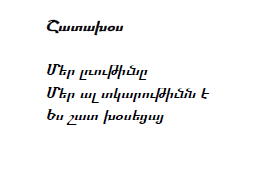
Դժոխք ա․

Դժոխք բ․

Ձմեռ

Ընթրիք

Սփիւռքահայը

Ուղղագրութիւն

Կուրութիւն

«Ղօզ»

Վերջ

Join our community and receive regular updates!
Join now!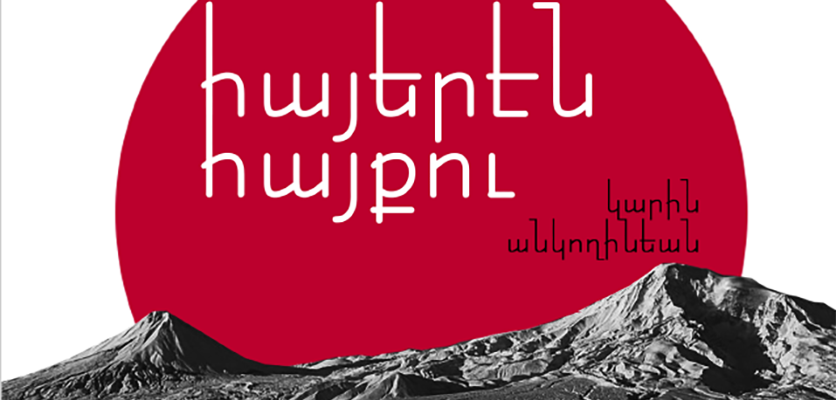





Attention!